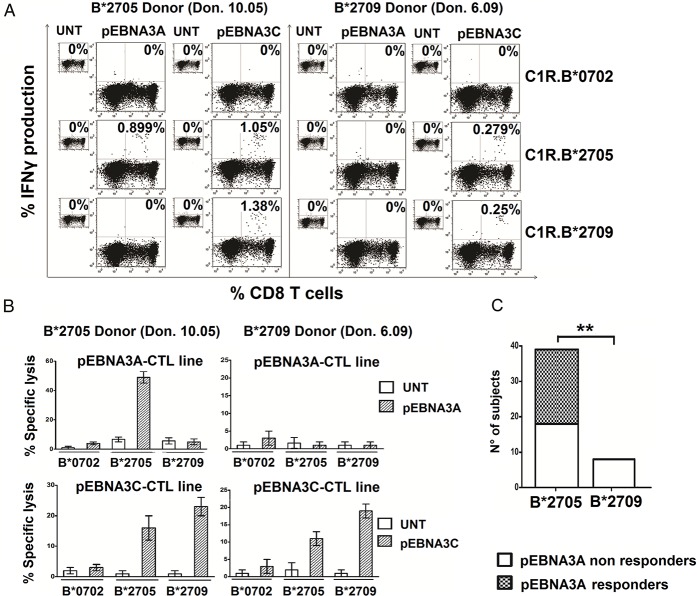Figure 3.
B*2705 but not B*2709-positive carriers react toward the HLA-B*0702-restricted EBNA3A epitope. (A) Detection of intracellular IFNγ production by PBMCs from a B*2705 positive/B*07 negative subject (Don 10.05) (left) or a B*2709 positive/B*07 negative subject (Don 6.09) (right) activated with pEBNA3A or pEBNA3C peptide for 14 d and then re-stimulated by the indicated, untreated or peptide-pulsed C1R transfectants. Numbers represent the percentage of IFNγ-producing CD8+ T cells. (B) Cytotoxic activity by representative pEBNA3A- (top) and pEBNA3C- (bottom) stimulated CTL lines from the same individuals as in (A) toward C1R transfectants used as target cells. E/T ratio was 20:1. Bars represent the mean percentage of specific lysis ± SEM of three separate experiments. (C) CD8+ T cell responses to EBNA3A detected by IFNγ production analyzed in 38 B*2705 carriers (31 patients with AS and 7 healthy controls) and in 8 B*2709 healthy donors. Twenty-one out of 38 B*2705 and no subject out of 8 B*2709 individuals show reactivity against EBNA3A antigen (p value = 0.0049 calculated by Fisher’s two-tailed exact test).

